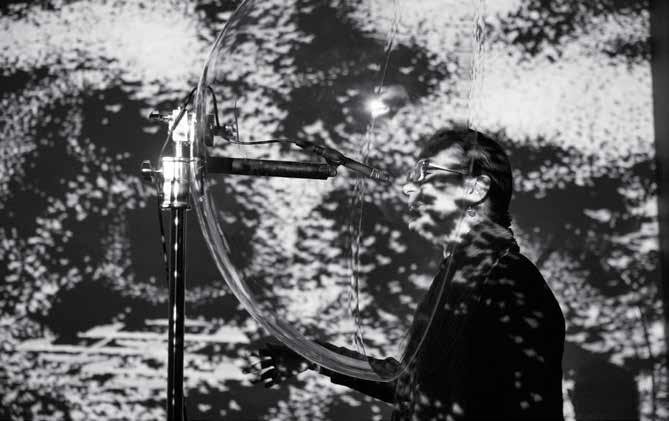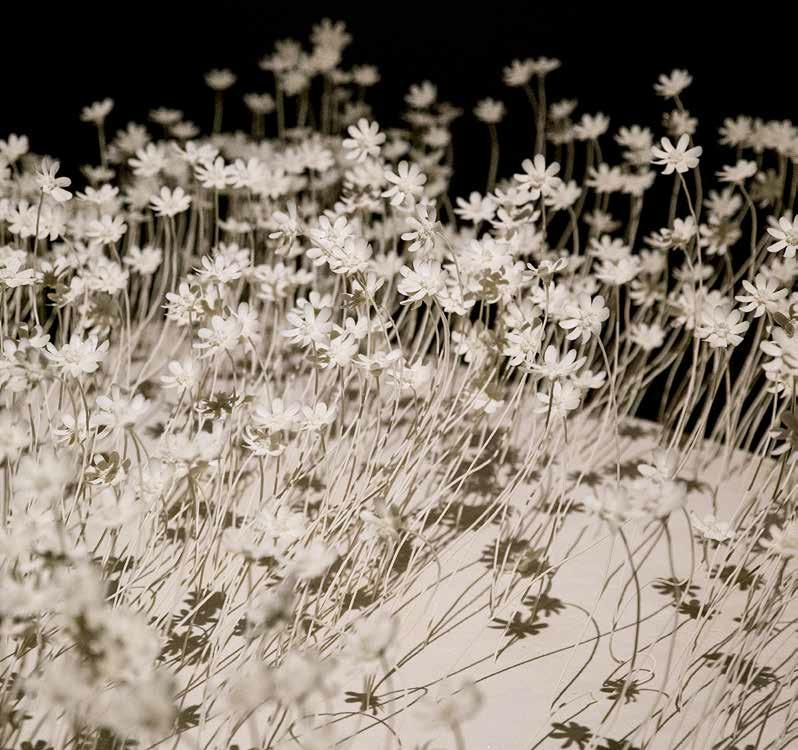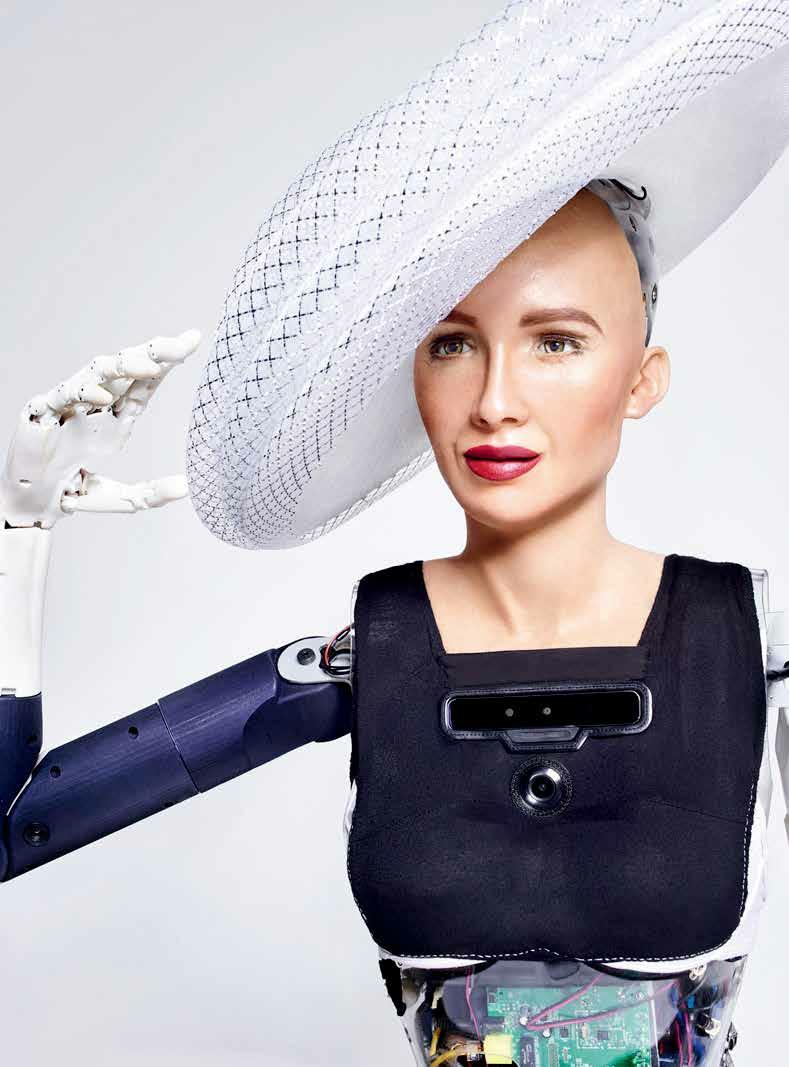When Art Meets Science
2019-12-30byYiMei
by Yi Mei



“How are you?” “Have you ever been in Beijing?”
Sophia, a humanoid robot who once addressed at the United Nations, recently met visitors to the National Museum of China in Beijing.
The first robot with a national citizenship, Sophia was attending the 5th Art and Science International Exhibition and Symposium, held at the museum from November 5 to 30, 2019. Themed “AS-Helix: Integration of Art and Science in the Age of Artificial Intelligence,” the exhibition was co-sponsored by Tsinghua University and the National Museum of China with an aim to demonstrate that art and science go hand in hand and intermingle like a helix.
The 120-plus featured works on display were selected from the submissions by art institutions and research institutions in China, the United States, Britain, France, Germany, Canada, Italy, Switzerland, the Netherlands, Austria, Australia, Turkey, Russia, Poland, Japan and India. Exhibits included new media art, industrial design, architectural and environmental design, visual communication design, textile and fashion design, ceramic design and other creations that reflect the integration of art and science. The works inspired viewers to understand and ponder the future world from three perspectives: the boundaries of human cognition, the artistic paradigm of technological innovation and the collaborative innovation of technology and art.
Integration of Art and Science
The work Faceless Portrait of the Countess seems ordinary, but it was jointly created by Ahmed Elgamar and artificial intelligence (AI) artist AICAN, which was trained to appreciate and learn from classic European art across five centuries. It can generate new works based on studies of more than 100,000 pieces of art and name them.
On the other side of the exhibition hall, an input terminal asked visitors for a name and slogan, after which a smart design platform called NIWOO could automatically generate a logo with the users favorite style. By deeply integrating aesthetic principles and design rules with data, the barriers to design and production methods can be broken. And rather than just an exhibited concept, this intelligent design platform is about to enter the market. In the future, people will be able to get customized designs for almost nothing.
Could this platform make designers obsolete? Xu Zuobiao, founder of NIWOO, admits that some low-end design jobs could be eliminated, but the most capable designers would welcome the help of AI to eliminate repetitive and laborious tasks, which would disrupt the thinking model of the entire design industry.
“When the platform is open to the public, if designers provide us with new design rules that can teach the AI platform they will get a bonus,”Xu notes. “So we are actually encouraging quality creation.”
In October 2018, the work Portrait of Edmund Bellamy created by AI was sold at the Christies auction house in New York for US$432,500. In July 2019, Xiaobing, an AI chatting robot developed by Microsoft (Asia) in China, held its first solo painting exhibition at the Central Academy of Fine Arts Museum. The age of AI is no longer far away, and the pace of integration of technology and art is also advancing by leaps and bounds.
“In the near future, perhaps art will no longer be exclusive to human beings, and AI can be engaged in art creation,” beams Lu Xiaobo, director of the School of Fine Arts at Tsinghua University. “Science and art are the two fields harnessing the greatest wisdom of humanity. By appreciating how they converge, we might catch a glimpse into the future.”
Art or Science?
The work Brain-machine Interface by Greg Dunn and Brian Edwards uses the reflective micro-etching technology to focus on the future of human brain interconnection. It describes the amazing advantages and potential dangers of neural interface technology: Humans could evolve through these technologies but would likely end up being victims of their abuse.
Will art become another victim of technology? What is the limit of AI? Is art created by AI still art? The exhibition also featured a series of high-end seminars. Tsinghua University invited artists, scientists, designers and scholars to discuss the relationship between art and science.“Considering the rapid development of AI and 3D printing, the forum explored the many challenges that AI brings to human society, industry and culture and presented diverse and exploratory innovative solutions,”illustrates Zhao Chao, executive curator of the exhibition and deputy director of the School of Fine Arts of Tsinghua University.
According to Gerhard Ludger Pfanz, a professor at Germanys Karlsruhe National School of Design and founder of the BEYOND Art Festival, AI cannot replace art and functions more like a muse, providing artists with multiple choices and serving as a tool for human inspiration.
Tsung-Dao Lee and Wu Guanzhong, the first two proponents of the Art and Science International Exhibition and Symposium, both ruminated on the relationship between art and science. “Art and science are two sides of a coin,” declared Lee, a Nobel Prize-winning physicist.“They originated from the noblest realm of human activity, and they both pursue profundity, universality and eternity.” Wu Guanzhong, a late Chinese art master and professor of Tsinghua University, said, “Science reveals the mysteries of the universe while art reveals the mysteries of emotions.”